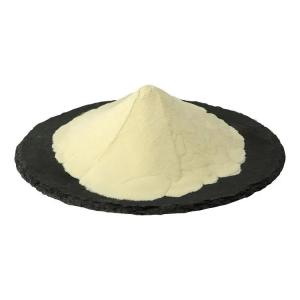News list
News Center
Hot Product
News
Nutritional data on phosphoric acid consumption
Time:2025-10-30
1. Overview of Phosphoric Acid in the Diet
Phosphoric acid (H₃PO₄) is a colorless, odorless acid widely used in the food and beverage industry. It is primarily added to soft drinks, processed foods, and certain dairy products as an acidulant and preservative. In nutrition, it contributes to the total dietary phosphorus intake, which is essential for bone structure, energy metabolism, and cellular function.
2. Sources of Phosphoric Acid Intake
The main dietary sources of phosphoric acid come from:
Carbonated beverages: especially cola-type drinks.
Processed foods: such as cheese spreads, canned meats, and baked goods.
Additives: where phosphoric acid serves as a pH regulator or flavor enhancer.
Naturally occurring phosphorus from meat, fish, and grains differs from added phosphoric acid in absorption and metabolic effect.
3. Estimated Consumption Levels
Nutritional surveys in various regions have shown that daily phosphorus intake (including that from phosphoric acid) often exceeds recommended levels. The average adult intake ranges between 1,000–1,500 mg per day, while the recommended dietary allowance (RDA) for adults is about 700 mg per day. A portion of this excess may be attributed to the frequent consumption of foods and drinks containing added phosphoric acid.
4. Metabolic Considerations
Phosphoric acid dissociates into phosphate ions in the body, contributing to total phosphate balance. However, when intake is disproportionate to calcium or magnesium consumption, it may affect the body’s mineral equilibrium. The balance between phosphorus and other nutrients is therefore a key nutritional consideration.
5. Dietary Trends and Monitoring
Recent nutritional data indicate a gradual increase in phosphoric acid consumption linked to global soft drink sales and processed food expansion. Public health and nutrition agencies continue to monitor phosphorus levels in dietary databases to better assess long-term intake patterns and guide reformulation strategies in food production.
6. Summary
Phosphoric acid contributes significantly to total phosphorus intake in modern diets. While it plays functional roles in food manufacturing, its widespread use requires ongoing monitoring to ensure balanced nutrient consumption. Understanding nutritional data on phosphoric acid intake helps support responsible dietary planning and food industry practices.
Phosphoric acid (H₃PO₄) is a colorless, odorless acid widely used in the food and beverage industry. It is primarily added to soft drinks, processed foods, and certain dairy products as an acidulant and preservative. In nutrition, it contributes to the total dietary phosphorus intake, which is essential for bone structure, energy metabolism, and cellular function.
2. Sources of Phosphoric Acid Intake
The main dietary sources of phosphoric acid come from:
Carbonated beverages: especially cola-type drinks.
Processed foods: such as cheese spreads, canned meats, and baked goods.
Additives: where phosphoric acid serves as a pH regulator or flavor enhancer.
Naturally occurring phosphorus from meat, fish, and grains differs from added phosphoric acid in absorption and metabolic effect.
3. Estimated Consumption Levels
Nutritional surveys in various regions have shown that daily phosphorus intake (including that from phosphoric acid) often exceeds recommended levels. The average adult intake ranges between 1,000–1,500 mg per day, while the recommended dietary allowance (RDA) for adults is about 700 mg per day. A portion of this excess may be attributed to the frequent consumption of foods and drinks containing added phosphoric acid.
4. Metabolic Considerations
Phosphoric acid dissociates into phosphate ions in the body, contributing to total phosphate balance. However, when intake is disproportionate to calcium or magnesium consumption, it may affect the body’s mineral equilibrium. The balance between phosphorus and other nutrients is therefore a key nutritional consideration.
5. Dietary Trends and Monitoring
Recent nutritional data indicate a gradual increase in phosphoric acid consumption linked to global soft drink sales and processed food expansion. Public health and nutrition agencies continue to monitor phosphorus levels in dietary databases to better assess long-term intake patterns and guide reformulation strategies in food production.
6. Summary
Phosphoric acid contributes significantly to total phosphorus intake in modern diets. While it plays functional roles in food manufacturing, its widespread use requires ongoing monitoring to ensure balanced nutrient consumption. Understanding nutritional data on phosphoric acid intake helps support responsible dietary planning and food industry practices.


 CN
CN





